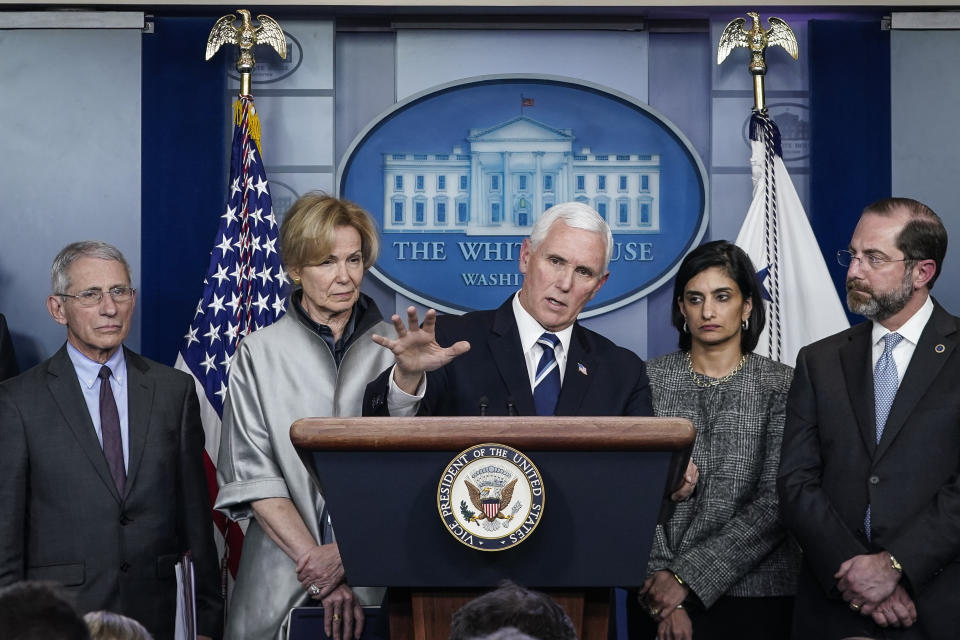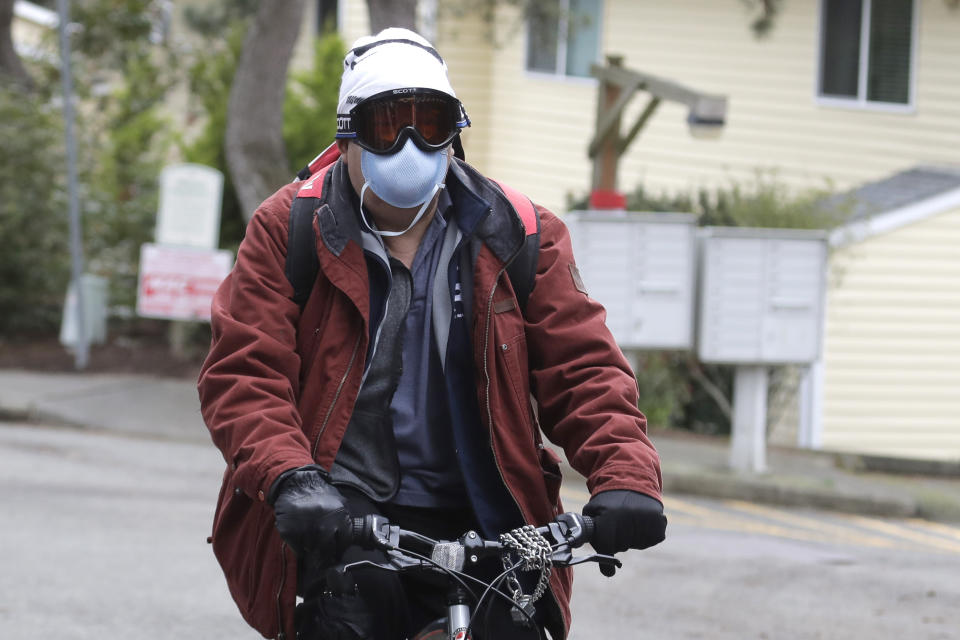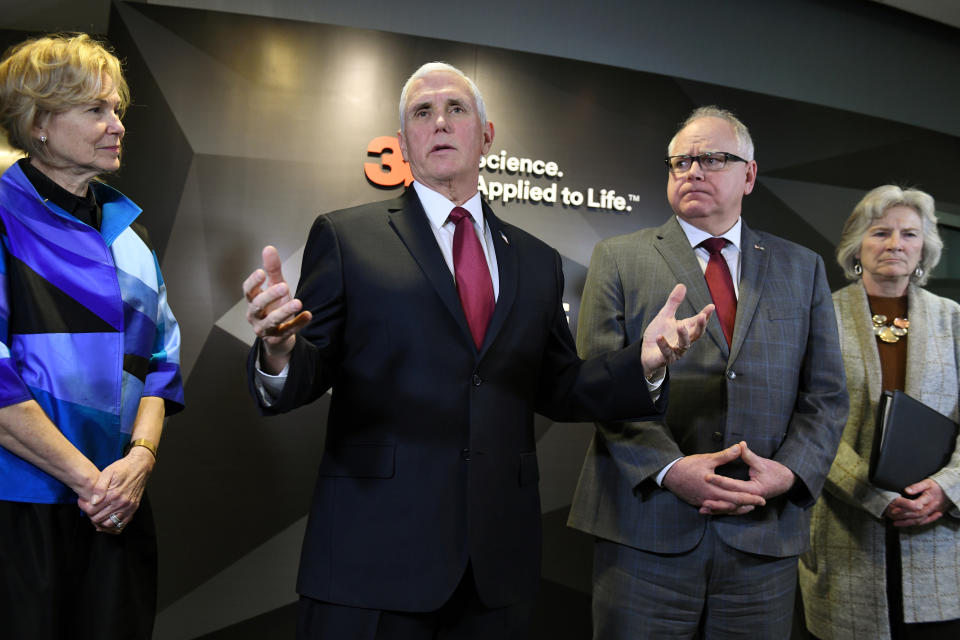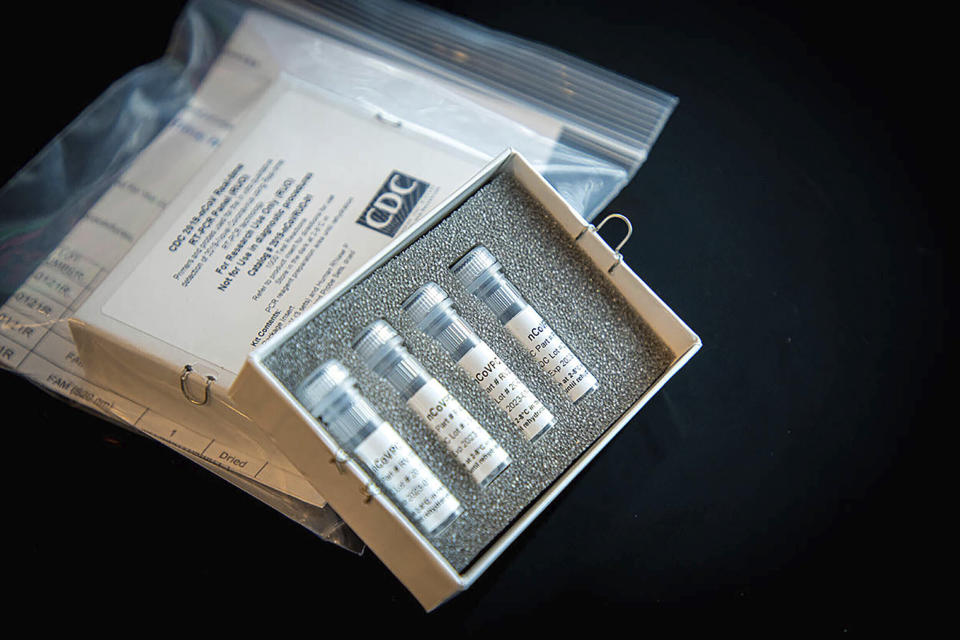Coronavirus testing rollout marred by confusion and false starts
WASHINGTON — Seventy-five thousand. That was the number of coronavirus tests that Nancy Messonnier, MD, a top immunologist at the Centers for Disease Control and Prevention, said could be performed by public health laboratories by the end of the week. The CDC had badly lagged in implementing its test, but was now intent on catching up.
That was on Tuesday. On Wednesday, there were numbers, with Vice President Mike Pence and other officials telling reporters and legislators something different altogether. “We do have about 1.5 million test kits going out as we speak to hospitals,” Pence said. In the same press conference, he also said — accurately — that the number of test kits to be shipped would be 2,500.
Then came Thursday and the numbers changed again. This time, the figures came courtesy of Health and Human Services Secretary Alex Azar, who said in a Capitol Hill appearance that 400,000 tests could be performed by the end of the week in public health laboratories. By the end of next week, Azar said, the United States would have the ability to test 1.7 million people.

It is unclear how the administration arrived at those numbers or why they keep changing. But according to multiple public health officials and laboratory representatives, even the lowest of those projections — the 75,000 tests posited by Messonnier — does not reflect the challenges that remain in implementing a national testing regime.
That’s in large part because public health officials are playing catch-up to a fast-moving virus that has already spread to 13 states. The epicenter of the U.S. outbreak is in and around Seattle, with 10 people having died in Washington state. But as of midweek, public health officials there had tested only 200 samples, said Chelsea Kellogg, a spokesperson for Seattle Mayor Jenny Durkan. And patients were being tested twice, Kellogg explained, which means that only 100 people have been tested in an area inhabited by 3.4 million.
The Trump administration has given non-government labs the ability to conduct their own tests, and Kellogg said that more labs would be ready to perform tests by the end of the week. By that time, however, seven weeks will have passed since the first case of coronavirus was detected in Washington state.
The Trump administration maintains that the risk to the general public from the coronavirus is very low. Pence, who is heading the White House coronavirus task force, flew west on Thursday to meet with Washington state Gov. Jay Inslee. The vice president struck a hopeful note. “We have a ways to go, but we will get there together,” he said, just hours after Congress passed an $8.3 billion coronavirus aid bill.

But earlier in the day, as he toured a 3M plant in Minneapolis, Pence offered a more cautious note: “We don't have enough tests today,” he said.
That acknowledgement was a deviation from the administration’s attitude, which has ranged from can-do optimism of the sort displayed by Pence to something approaching a kind of dismissive swagger, as when acting White House chief of staff Mick Mulvaney claimed that media coverage of the virus was intentionally overstating its danger because “they think this is going to be what brings down the president.”
“We have contained this,” mused White House economic adviser Larry Kudlow, declaring efforts to contain the outbreak “pretty close to airtight.”
People familiar with the business of fighting diseases do not share this view. The Trump administration’s “predictions have been extraordinarily optimistic,” says William Schaffner, an epidemiologist at Vanderbilt University in Nashville. He added that Trump officials have had a “tendency to walk on the sunny side of the street” in their coronavirus projections and to minimize the significance of the shortfall in testing.
As of March 3, only 1,200 Americans had been tested for the coronavirus, according to Richard Quartarone, a spokesman for the CDC. That represents 0.0004 percent of the American population. While it is neither possible nor necessary to test all Americans, the current number is too low to give epidemiologists a sufficiently clear understanding of the situation.
“There isn’t any doubt that we are under-tested,” Schaffner told Yahoo News.

Epidemiologists have been bracing for the coronavirus to arrive in the United States since late January, when it was clear that China was in the midst of an epidemic it was unable to contain.
On Jan. 16, the World Health Organization began to distribute test kits in China’s Hubei province. American officials, however, decided to develop a test of their own. Why they did this is not exactly clear. Microbiologists in the United States may well have wanted the bragging rights that come with a proprietary test, as opposed to using a test that comes from abroad. They may have also underestimated how long it would take to develop a test.
The CDC sent its test kits out on Feb. 6. It quickly became apparent that one of three assays within the test — a “negative control” that would confirm that a person was not infected with the coronavirus — was contaminated. In a Feb. 12 briefing, Messonnier owned up to the mistake but also characterized it as a routine error that would not prove problematic in the long term.
“This is really part of a normal process and procedure,” she said. “We have the quality control set up specifically to allow us to identify these kinds of problems.” At the same time, she maintained that all coronavirus testing would continue to be routed through the CDC, meaning that labs could not conduct tests on their own.
In other words, the CDC asserted its primacy over a process it had by its own admission mismanaged.
By the last week of February, the CDC had fixed its own tests, but plenty of confusion remained about the most basic questions surrounding where, how and by whom those tests could be conducted. Even the most senior members of the administration struggled to get the facts right.

For example, in a television appearance on March 1, Health and Human Services Secretary Alex Azar said that 3,600 people in the United States had been tested for the coronavirus. He promised a “radical expansion” of testing in the coming days.
Quartarone, the CDC spokesperson, explained to Yahoo News that Azar was incorrect about the number of people who had been tested, because people undergo more than one test. “Many patients have had multiple samples submitted and tested, especially among the initial cases, so CDC could understand how long the virus persisted in the body and what specimens were the best for accurate testing purposes,” he said.
Confusion about the coronavirus testing has marked both statements by public officials and reporting on those statements. The Trump administration appears to have been a victim of its newfound commitment to openness. Every day this week has seen public health officials testifying on Capitol Hill. Under sometimes hostile questioning from anxious lawmakers, they have given wildly divergent responses, not only on the number of test kits deployed but on even more basic issues, such as the fatality rate for those infected by the coronavirus.
Even the most pressing question of all, about how many Americans are infected, has been a matter of ferocious dispute.
Some of the confusion has been amplified by news reporting lacking critical information. “US could test up to 1 million people for coronavirus by end of week, FDA says,” read a headline in the New York Post earlier this week, misrepresenting both what Food and Drug Administration director Stephen Hahn told Congress and, as a matter of fact, what the article itself explained.
The routinely sensationalistic Daily Mail went even further, proclaiming that “Pence promises a MILLION coronavirus tests will be run this week.” Neither Pence nor any other member of the White House has made such a promise.

At the same time, when Pence said on Wednesday that 2,500 test kits would be delivered by the end of the week, some took that to mean that only 2,500 people would be tested. The figure even found its way into the monologue of late night comedian Jimmy Kimmel, who joked that it was akin to throwing a single life preserver at a sinking ship.
In fact, each of the 2,500 “kits” contains the ingredients for 500 tests, accounting for a total of about 1.3 million tests, roughly the number that Hahn also promised. But neither Pence nor Hahn clearly explained that some people would be tested more than once, or that some tests would be used as controls to ensure the integrity of the entire batch.
That means that while the total number of people tested will be much greater than 2,500, it will also be quite a bit less than 1.3 million. Speaking hypothetically, Quartarone said that a kit of 1,000 tests would be able to consistently test about 350 patients (that is, with each patient tested more than once). Applying the same percentage to the 1.3 million tests the administration says are now being sent to labs indicates that about 455,000 people could be tested in the coming days.
The real bottleneck, however, is not with the number of tests available but the number of sites where those tests can be conducted. Until just days ago, privately held laboratories were not permitted to conduct testing on their own. Trump blamed an Obama-era rule that he said hobbled the administration’s ability to enlist nonpublic entities in the fight. But when asked about what that rule could be, Schaffner, the Vanderbilt epidemiologist, said he was not aware of such a rule’s existence.
“We just haven’t been getting information about how to get those kits,” says Mark Birenbaum, of the National Independent Laboratory Association, which represents more than a hundred of the kind of facilities that Trump would now like to enlist in testing patients.
Birenbaum said that he reached out to the CDC on Feb. 14, only to be rebuffed. “We have limited kits for distribution and those kits are being prioritized for the public health laboratories,” Birenbaum says an official there told him. Birenbaum says that some of the labs his group represents could have a test ready “within a week,” while “others may take weeks to get it going.”

Public health laboratories were not prevented by the CDC from participating in testing but they, too, are far from full capacity. Michelle Forman, a spokesperson for the Association of Public Health Laboratories, told Yahoo News that there are currently 69 public labs in 45 states and including Washington, D.C., that “have validated and are able to perform COVID-19 testing” at the present moment. Two more labs will be ready over the weekend.
“We know of 13 additional labs in progress with their verification,” Forman added, “four of which anticipate being up by the weekend.” She said that each lab can perform 100 tests daily. “When fully online, there will be 100 local and state public health labs testing,” Forman said. “That means testing capacity will be 10,000 patients per day.”
And that would mean that, if only public labs were deployed in the coronavirus effort, it would take about a month and a half to test 450,000 people. Of course, public labs are not expected to go it alone, with private labs expected to start testing within a matter of days.
But even then, the results will not be immediate. LabCorp, one of the companies now mass-producing coronavirus tests, says that once it receives test kits back from testing facilities, it will take another three or four days to return results. That means that it could be several more days before public health officials finally have a clear view of the coronavirus battlefield.
_____
Read more from Yahoo News:


